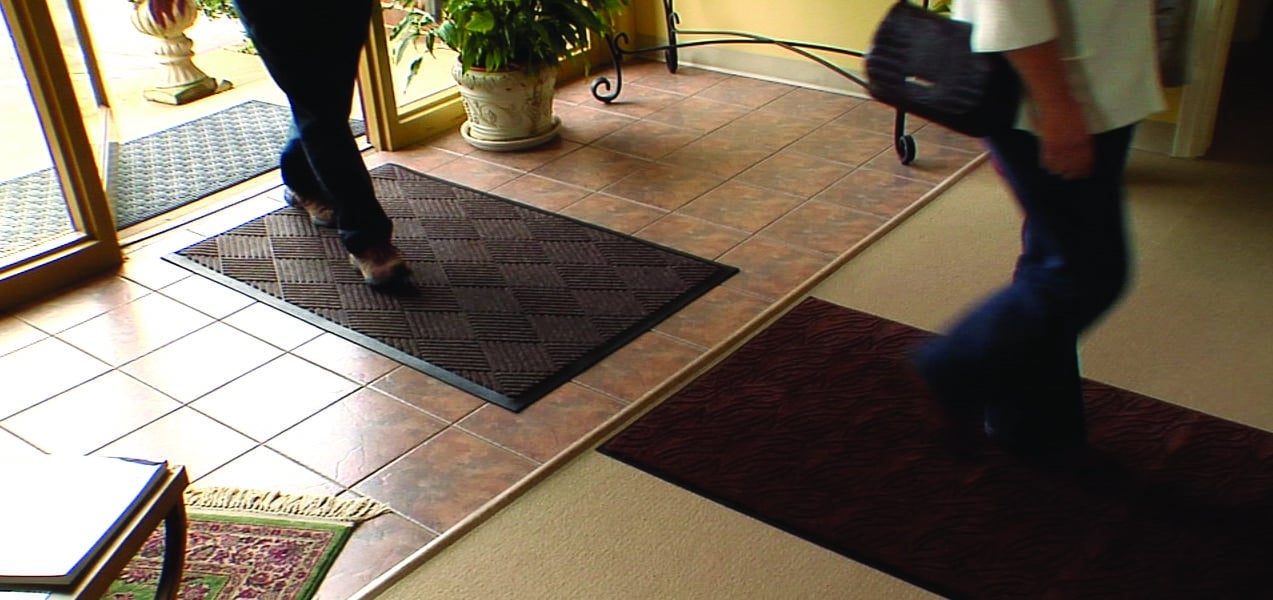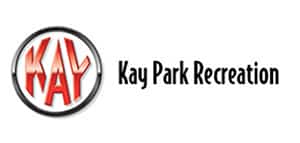By John P. Morris
While slips, trips and falls occur year-round, sweater weather is the perfect time to think about fall prevention. Fall hazards exist everywhere, such as slippery leaves, wet and icy pavement and winter decorations with frightening wires posing severe tripping hazards. They can’t be ignored, even when schools are extremely busy with a flurry of activity.
“The injuries sustained from a fall can range from the bruised ego to a broken limb to even death. Those incidents can stack up to lost wages or a lawsuit,” says Craig Moore, project manager (safety specialty), Ferguson Facilities Supply. “The good news is that many falls are preventable.”
Be mindful of slips, trips and fall hazards.
Awareness of the potential for a fall-related accident and following general guidelines are an excellent way to begin. Always remember to look out for possible slip, trip and fall hazards in different areas of the school. These are commonly found in areas of high traffic, where one may not see spills or broken items like torn up carpeting. Be alert!
“It is important to note that every building is different, with its unique architecture,” says Moore. “Adopting a few safety precautions and ensuring that equipment is up to standard will solve most issues and, in some cases, can even save lives.”
Stop dirt and moisture at your door with entry carpets.
When teachers and students enter the school, their shoes bring in evidence of what is outside. John Holden, Midwest area manager, Ferguson Facilities Supply says, “You can stop that moisture and dirt from coming into the interior of your school institution with well-placed carpets – be it snow, rain, dirt or muck.”
To ensure your school entryways stay dry, Holden stresses the importance of absorbent carpets, saying, “Mats are an investment in safety.”
Some schools use a three-mat system. The first mat scrapes or loosens the accumulated debris, the second mat removes the dirt, and the third mat eliminates the final bits of dust and moisture.
Holden says, “With the three-mat system, it is estimated that 85% of dirt, dust and moisture can be contained. With the right resources in place (such as mats), there’s a chance to capture most of these particles. At a minimum, schools need a mat that extends six feet at each entrance.”
Mats and entry carpets are one of the best measures to adopt. They keep moisture from shoes during wet or wintery months confined to one manageable area and minimize the slip and fall risk in school halls and classrooms.
“Schools who opted to put their logo on the mats tell us they serve a dual purpose,” says Holden. “They say it’s increased school safety and also enhanced school pride. It’s great to see your mascot or logo first thing when you walk in!”
Utilize good housekeeping both indoors and outdoors.
Establishing a schedule to maintain outdoor areas such as sidewalks and doorways regularly is one way of minimizing risk. In addition, Moore says, “It is necessary to keep an eye out for hazards of all types on your outdoor property which you visually inspect regularly.”
Winter-related accidents, such as slips and falls on icy steps, can be prevented by applying a non-slip product to the surfaces. Keep walkways clear with salt, ice melt, sand or other materials that provide traction.
An easy method to prevent outdoor fall injuries during winter months includes coordinating intervals for shoveling, salting, moisture removal, and debris. Ensure the maintenance staff is equipped with enough salt on hand to prepare for icy conditions. Additionally, have a plan in place if the ice is too thick to safely clear with shovels and salt.
Holden says, “Preparation is key. Take a few minutes to identify pavement cracks or heaving and if unable to repair them right away, spray paint these hazards a bright color to ensure all visitors identify the hazard.”
Make sure your maintenance staff is ready for any mess.
Ensure that the maintenance staff have access to proper equipment, adequately stocked supplies, and follow the training and directions for safe and appropriate use. Additionally, the custodial staff should be given barricades and equipment to block students from slips, trips and fall hazards.
“Signage can play a big part in preventing falls. Post signs in visible locations,” Holden says. “Bright, eye-catching signs are successful in alerting people to practice caution. Consider bi-lingual, permanent signs in some locations around your campus. At the same time, it is a clever idea to move sings around. Consider changing the font, color and size so that they don’t start to blend into the background over time.”
THE BOTTOM LINE: Promote a safe winter environment.
One of the most common accidents in school is a slip, trip or fall and anyone who walks onto the school grounds is at risk. Preventing injuries is everyone’s responsibility. The best thing you can do now is review your slip, trips and fall prevention strategies and make updates. From investing in mats, establishing regular housekeeping procedures, including stocking enough winter weather supplies such as ice-melt to making sure your staff is ready for any conditions, the steps you take today can prevent a fall in the future.
“I cannot stress enough that safety is an investment. Some schools that I work with rent mat systems and other winter-weather equipment. Throughout a few seasons, it pays for itself,” Holden says. “I’ve never known of a municipality, business or manufacturer that lost a liability suit when they had a system in place and were proactive. But, unfortunately, we must think about these things. Still, it comes down to is thinking ahead, owning your responsibility to your students, your faculty and staff to ensure a safe, walkable entry – free from danger – into your school community.”
When you proactively think ahead for the season, when the brisk chill rolls in, signaling the start of fall season and you reach for your pumpkin spice latte, you’ll do so knowing you’ve been a part of promoting your winter fall prevention strategies, thus keeping your school community safe year-round.
John P. Morris is district manager for Ferguson Facilities Supply, which provides maintenance, repair and operations (MRO), janitorial/sanitation and renovation products and solutions to facilities management professionals across a variety of industries, www.ferguson.com/facilities-supply.










